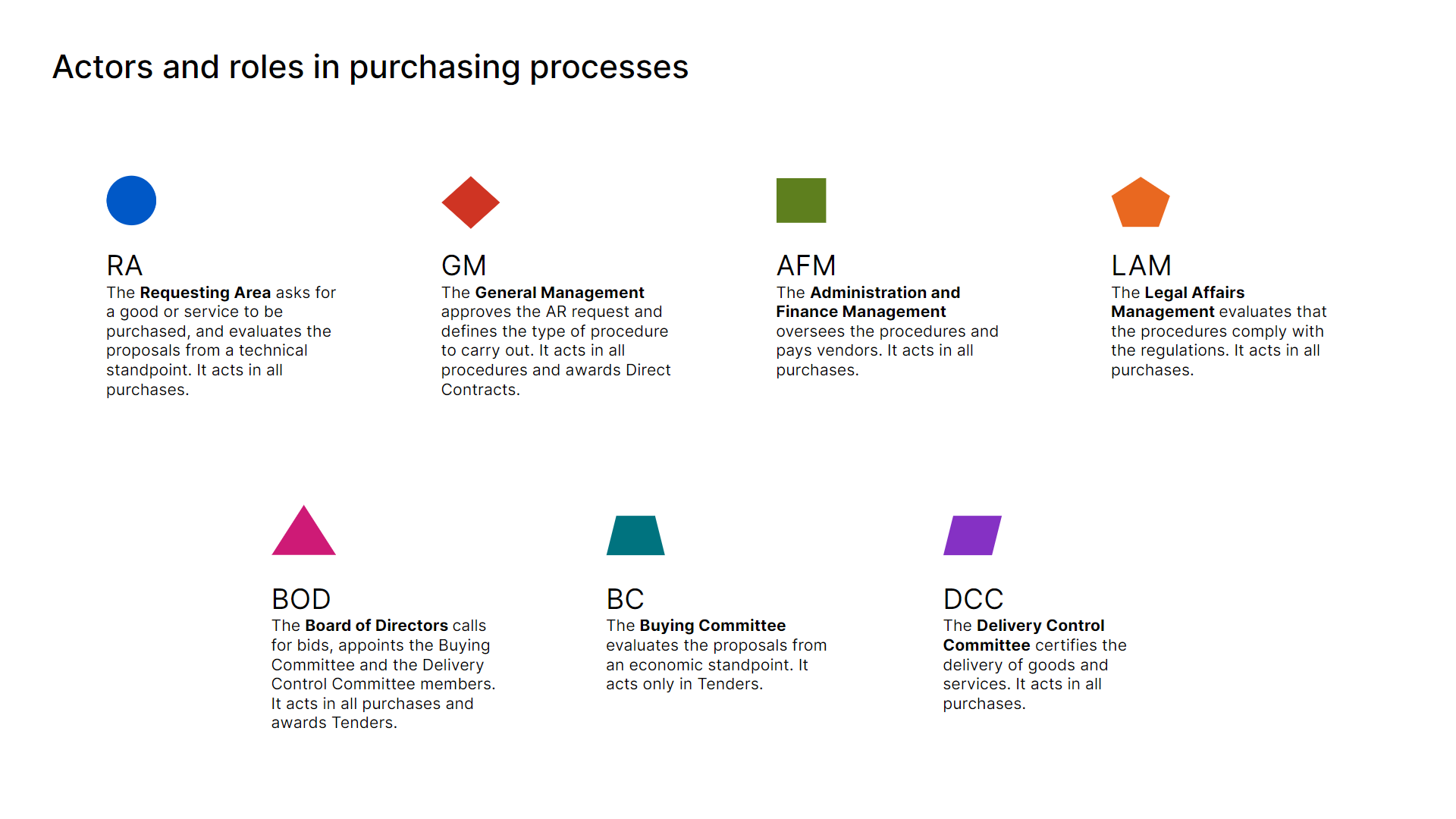Case study
We helped a government agency to explain its procurement process to their employees in a human-centered way.
A government agency (details under NDA) had redesigned its purchasing process and the new workflow was not fully adopted by the staff. The operations involved over 100 people distributed in different areas (plus the bidding companies) and the errors and delays impacted the supply chain of an organization of over 1000 people.
The tutorials were condensed in a manual that lived in a document and in a flowchart that lived in a spreadsheet. Users found it hard to use information split between two files.They also wanted the task description in the flowchart to be clearer and stand out more.
Some users’ quotes:
Our goal was that the content made it easy for the employees to identify the steps of the process, the actions to be carried out in each step and the areas involved. Since the users had different professional backgrounds and literacy levels, the content needed to be clear and inclusive.
A risk in this type of content is wanting it to be all things for all people. To avoid scope creep, we agreed with the client to limit the content job to explain the purchasing process, leaving out the guidelines to implement it in the system (part of another tutorial) and any other explanation that wasn’t specific to Purchasing (for example: how to issue a payment).
We edited the manual using plain language and created visualizations for both use cases we identified in our discovery: reading on the computer and printing and hanging things on a wall.
During the editing, we discovered some process improvement opportunities, like changing the task order to provide an area with key information sooner and removing redundant steps. We presented them to the client and they agreed to make the adjustments.
We also recommended including the information date of publication and revision in the docs. This is good practice for content governance. If we want things to be used, we must have planned maintenance mechanisms so that they are always usable and we have to make them public and commit to them. In this regard, content is just like any other asset.

Due to a phenomenon called “cognitive fluency,” our brain perceives information that’s easier to read and understand as more believable and doable. Many aspects of the content design influence that feeling of easiness, including font size and style, text-background contrast, syntax, terminology and formatting.
Corporate processes don’t live in documents but in your employees’ minds. Communicating your processes in a human-centered way increases the chances of good implementation. The faster what’s documented becomes shared knowledge, the better your service will perform.
Wondering if we are the right fit? We too. We can do an intro video call and discover it together. If we are not what you need, we can help you find a more suitable partner.
